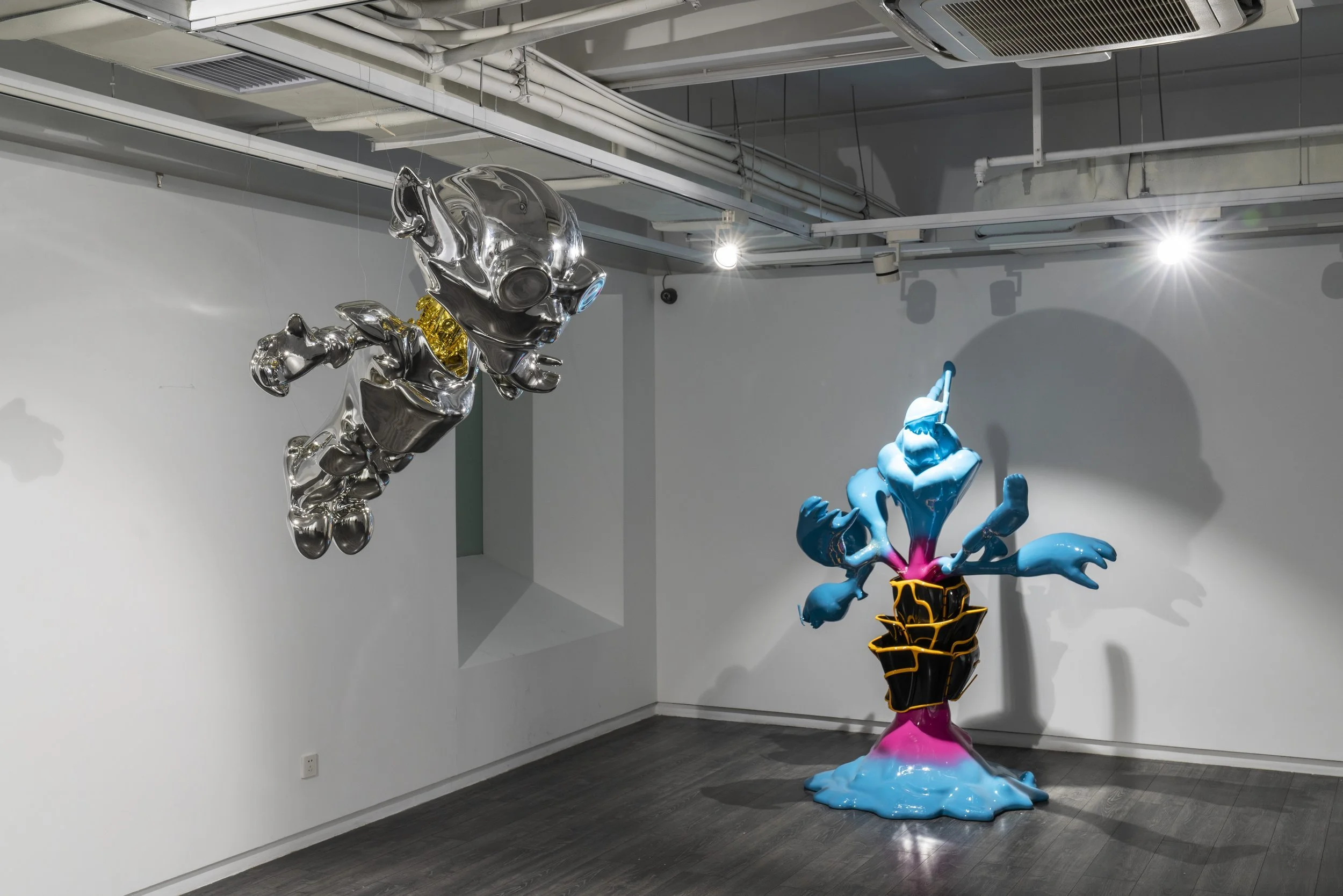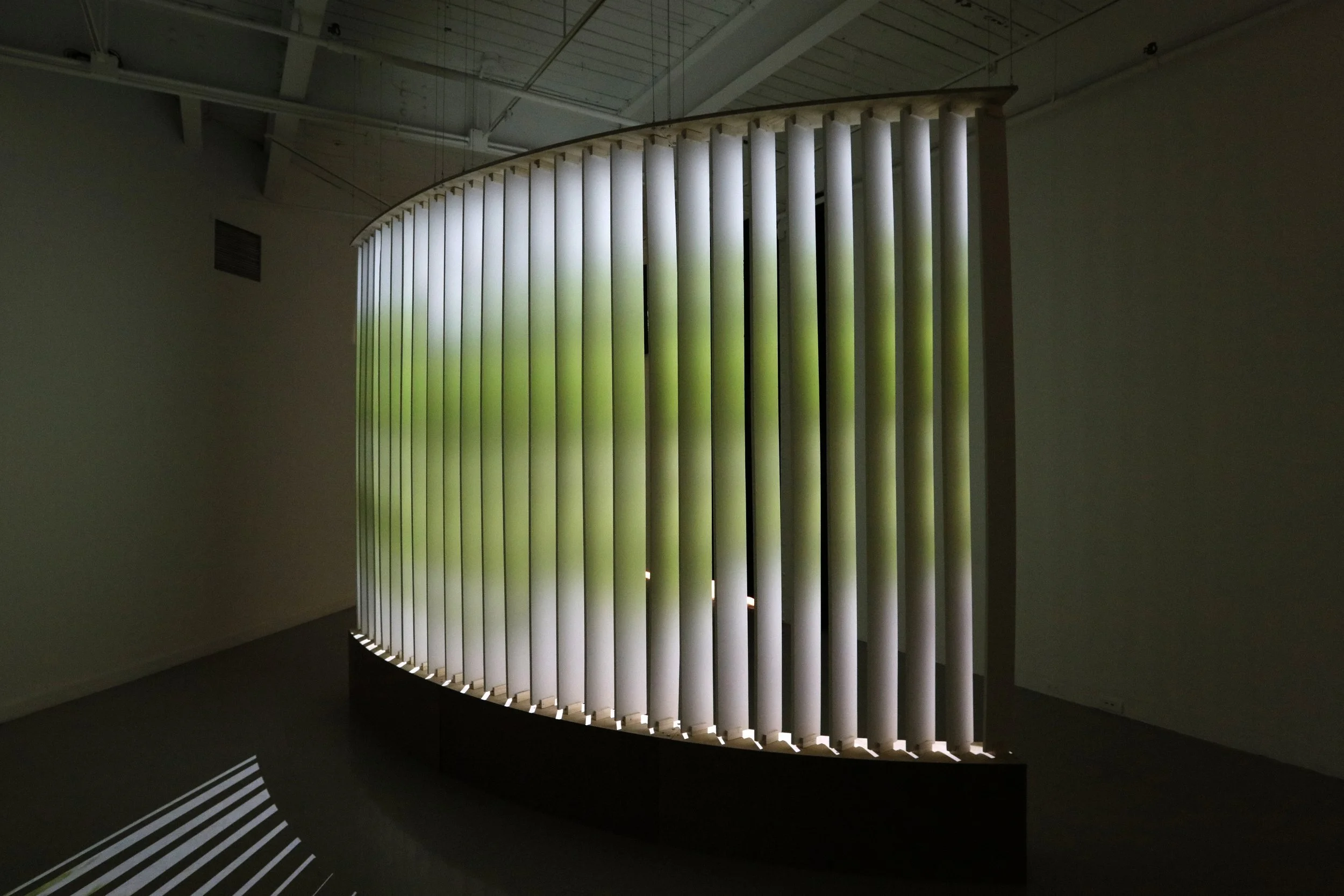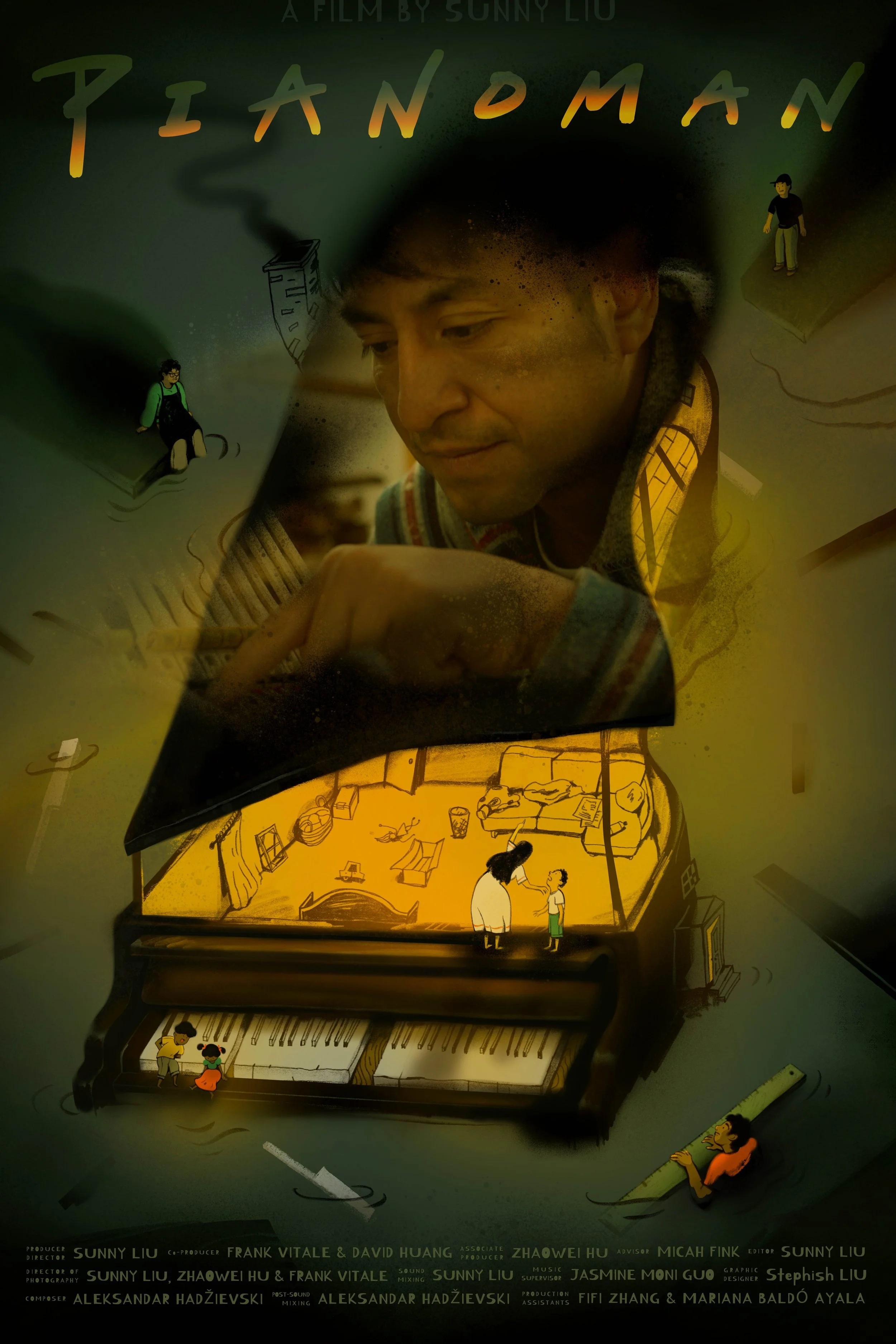10 Questions with Cherrie Yu
Cherrie Yu is a 25-year-old artist born in Xi'an, China. She currently lives and works from Chicago, IL. She holds a bachelor's degree in English Literature at the College of William and Mary and an MFA from the School of the Art Institute of Chicago. She has shown work at Chicago Cultural Center, the Museum of Contemporary Photography, Links Hall, and Mana Contemporary Chicago. She has been an artist in residence at ACRE, Contemporary Calgary Museum, and a visiting artist at Emory University. Her films have been screened at Satellite Art Show, Helena Anrather Gallery, Heaven Gallery, and Virginia Commonwealth University. She is the Kala Art Institute Media Award Fellowship awardee and will be an artist in residence at Yaddo Foundation in 2021.
Cherrie Yu Portrait
Narrative Studies | DESCRIPTION
Narrative Series is a series of videos in which classical narratives and characters were reenacted with thrift objects or foods. The narrative is chosen often signals a significant change to the characters selected, such as their marriage, death, exile, or injury.
Lydia and Matthew | DESCRIPTION
Lydia and Matthew are a screen dance featuring a duet between Lydia Feuerhelm and Matthew Lemus. Lydia is a partner dancing teacher, and Matthew is a janitor at a high-rise residential building in downtown Chicago. I spent a month and a half working with Lydia and Matthew separately, collecting their biographical information, performance histories, movement habits, and life routines. In the end, I put together a solo for each of them that corresponded with each other.
INTERVIEW
Could you tell us a little more about your background? How did you start experimenting with video and performance?
My background was in English literature. I went to the College of William and Mary in Virginia. It was a very traditional liberal arts college. In my third year there, I knew I wasn’t going to stay in the academia, and I wanted to do something else. I went to Chicago that summer and took a workshop with members of the former performance group Goat Island. That was one of my first experiences making art and performing.
Why are you an artist, and when did you first decide to become one?
Becoming an artist is a decision that happened throughout time. I decided to study art in 2017 after finishing my literature degree and finished an ensemble performance piece as my thesis. After 2017 I started making video pieces and performances that were drastically different than the works before. I never really was consciously thinking about putting the label of Art on what I was doing. For me, it is a process of thinking. In my practice, I try to carve out space so I can practice thinking in my own ways, sometimes together with other people.
In your work, you often draw inspiration from archives and footage, like in the case of famous choreographers. How do you choose these fragments, and how do you incorporate them into your work?
I started a body of work in video form in 2017 and 2018 called “Studies Series.” These videos all involve the reenactment of archival footage. I chose fragments involving any sort of body movement that adhered to some sort of predetermined rules, such as a wrestling match or a ballet phrase. I work with fragments between 10 seconds and 4 minutes because I wanted each video to stay in the miniature scale and because reenactment became very laborious once the source video was too long.
Sisyphus - Narrative Studies. Cherrie Yu©
Cordelia - Narrative Studies. Cherrie Yu©
In your statement, you say you "use the juxtaposition to explore how the quotidian and the extraordinary often disguise as one another." Can you give us an example?
In this statement, I relied on the binary model of extraordinary versus quotidian for the sake of argument. I believe that things are not distinctly A versus B in actuality but rather exist on a spectrum. This can be applied to anything that is understood as in opposition to each other. In the past 30 years there was a lot of scholarship that talked about the spectrum model instead of the model of opposition in terms of gender. When I say one thing is disguised as the other, I really mean that these two things are not fundamentally different. One example would be my 2019 film "Lydia and Matthew," in which I collaborated with a partner dancing teacher and a janitor on two corresponding solos. I made a set of movement language that both of them could do, and their scores came in and out of each other. That's what I meant by disguise - it is no denying the difference between two people but rather deconstructing the idea that the difference between them is inherent and essential.
Your series "Narrative Studies" reenacts some of the most famous and classical tropes of literature, like Sisyphus or Cinderella. Can you talk about your project and the intentions behind it?
"Narrative Studies" came from a one-week intensive period of making to workshop the idea of translating classical narrative with ordinary objects. I started the week going to a few different thrift stores and grocery stores and getting as many little things as possible. Then I laid all these things in my studio and started researching classical characters and stories. The goal is to see if it would be possible to act out some of the stories with the objects. I noticed how characters tend to be defined by particular events they undergo, such as Sisyphus' punishment, or Cinderella's fitting of the shoe, or Ophelia's drowning. So, in the end, the acting out of the characters really becomes the acting out of these character-events. I think of these events as some sort of pivots or weight shifts within the narrative, and they change the lives of the characters in fundamental ways. So a way to translate them into object choreographies was through manipulation of gravity.
Lydia and Matthew, still from the video. Cherrie Yu©
On the contrary, in your work entitled "Lydia and Matthew," you put together an original solo routine that parallels a dance performer's work and this of a janitor. How did you find similarities between the two? Are the similarities based on movements only, or did you analyze different aspects of their jobs?
I analyzed different aspects of their histories of moving, and I would ask them to respond to each other and generate more movement materials that way. For example, I asked Matthew Lemus to demonstrate some of his job tasks to me, including taking apart a pipe and putting it back together. We used this sequence to generate a short sequence that involved movements of the arms, the head, and the upper torso only. I took this sequence then to Lydia, and she made her own version of it without drastically changing its basic structure. Another strategy is to ask them to respond to the same source. So one week, I showed them three clips, which were from Martha Graham's "Diversions of Angels," Merce Cunningham's "Points in Space," and Yvonne Rainer's "Trio A." They each responded to the clips and picked their own favorite gestures to learn and respond to. But of course, these materials then solidified into their own versions of the original movements. Here is another example of translating materials. I sat in on some of Lydia's partner dancing classes. She taught Waltz one day, and a particular foot pattern was called "the Jane Austen." We, later on, used that pattern for Matthew's opening mopping sequence, and the interesting thing is that at the end of the sequence, the wet mop made the exact pattern of "the Jane Austen" visible on the concrete floor. I consider a scale shift in the translation of movement, and it was more of a subtle connection. You might not even notice it, and it is okay that it remained in the background.
As an artist, what are your main sources of inspiration?
The art that I encounter that I love always leaves a profound imprint on my psyche and thinking. One person I can think of on the top of my head is the choreographer Trisha Brown. I am currently learning little phrases from her first proscenium dance, "Glacial Decoy." I also recently encountered the filmmakers Dani and Sheilah ReStack, and their works absolutely blew me away. I also take workshops with other artists or writers when I have the time to. In January, I took a workshop with the writer Erica Cardwell, and it nudged my practice in such a gentle and profound way that I am still processing the ideas from it. It doesn't often happen when I feel like I understood something and it went into my core, but when it does happen, it is the most wonderful thing! My advice is to follow the things you love, and they will lead you to more places that you can call home.
Cherrie Yu portrait during a performance
Which of your projects has given you the most satisfaction, both in terms of reception as well as in terms of production?
It was actually a group ensemble piece I made in my undergraduate college in 2017. It was a piece called “Is This the Shoe?” that I developed with five other performers, some of the painters, some of the actors, some of the dancers, and some of them didn’t identify as artists at all. It was such a wonderful process. I was directing the piece as an independent study, and all the performers earned credit for participating, so in a sense, it was my earliest experience teaching and organizing workshops. We spent four months workshopping gestures and movements, and everybody brought in materials and ideas and writings, and we met twice a week for rehearsals. I never had any experience like that after — it was the biggest crew I have ever worked with. It was so wonderful to have that many people in a piece, and everybody was eager and willing and always ready to try something. I think partially moving to a bigger city like Chicago, people tend to be busier, and time and space got more expensive, so I had to stop working that way. It was so satisfying to perform it too. I remember it was in a small dance studio, and we taped out the performance area. There were so many audience members (most of them are friends and acquaintances) that people were sitting front to back on the floor all the way to the walls of the studio. There was a real sense of proximity and sweat and excitement.
What do you think the past year has taught you? Do you find yourself different from what you were just 12 months ago?
I grew so much this past year. I remember how debilitating it was last March, and for about three months, I couldn’t do anything. I couldn’t think or make or respond. Everything had felt too urgent, and all I wanted to do was crawl into bed and sleep. I learned to come out of that state, and I started working on the “Trio A Translation Project” last summer, and it saved my life in a way. It was the first time I realized that making art was something that can lift me up, too, instead of being work that I do. I think I have a clearer picture of myself as an artist now than 12 months ago. This change, I believe, came from long periods of self-reflection and isolation. I was always afraid of spending time by myself before the pandemic. I am getting much better at it now. I also learned to be more patient and say no to things that I don’t need or cannot handle with more clarity in my mind. All these, I think, are part and parcel of being an artist, a woman, and a person in their twenties. I found my life so intertwined with my practice this past year.
What are your plans for the future? Is there anything you would like to achieve in the upcoming months regarding collaborations, projects, or exhibitions?
I am applying for fundings to continue and finish my film “Trio A Translation Project.” The current cut is on view in the group exhibit “From Checkers to Complex Systems” at the Chengdu Times Museum until June 2021. In May 2021, my 2019 film “Lydia and Matthew” will be on view at Roman Susan Gallery in Chicago. I am excited to be an artist in residence at the Kala Art Institute in Berkeley this winter. I have never lived or made work on the west coast. It will be a real change. In summer 2022, I will travel to Calgary, Canada, to participate in a group show at Contemporary Calgary Museum as a continuation of the Collider Residency in 2020. I am excited about all these upcoming opportunities.






















